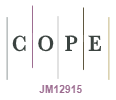Manual versus automated coding of free-text self-reported medication data in the 45 and Up Study: a validation study
Danijela Gnjidic A B * , Sallie-Anne Pearson A C , Sarah Hilmer B D , Jim Basilakis E , Andrea Schaffer A , Fiona Blyth B F and Emily Banks
+ Author Affiliations
- Author Affiliations
A
B
C
D
E
F
G
* Correspondence to: danijela.gnjidic@sydney.edu.au
Public Health Research and Practice 25, e2521518 https://doi.org/10.17061/phrp2521518
Published: 30 March 2015


